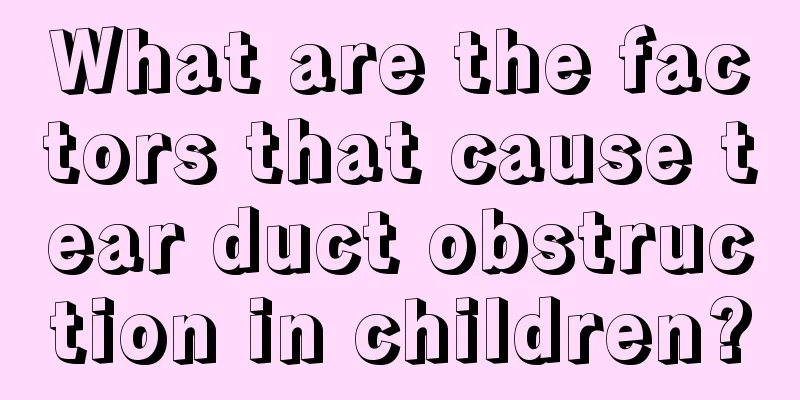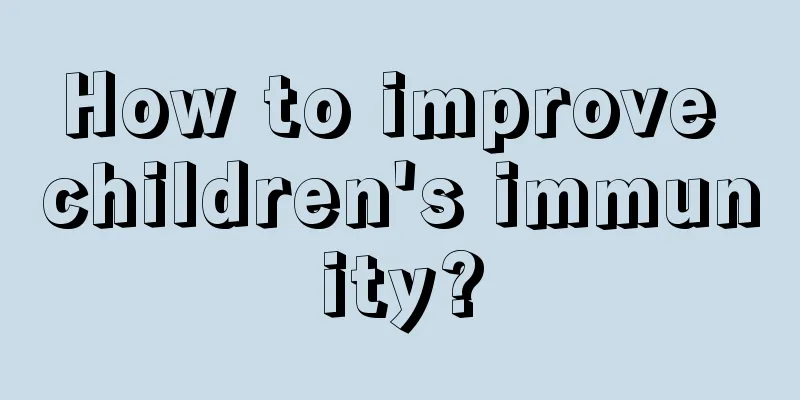What are the factors that cause tear duct obstruction in children?

|
Tear duct blockage often occurs in children. Tear duct blockage will affect the normal physical development of an individual. Tear duct blockage usually includes several factors, congenital and developmental reasons, as well as inflammation around the eyes and nose, acute conjunctivitis, etc. These may all lead to tear duct blockage, so as long as you take good care of yourself in life, you can prevent the phenomenon of tear duct blockage. Tear duct obstruction Pathological etiology Adults secrete 0.5 to 1.0 ml of tears every 16 hours. In addition to moistening the eyeballs and partially evaporating, the remaining tears are drained into the nasal cavity through the lacrimal ducts. Tear duct obstruction can occur anywhere: in the puncta, canaliculi, lacrimal sac, and nasolacrimal duct. The causes of blockage in different parts of the tear duct are different, but the general causes of tear duct obstruction are as follows: 1. Congenital and developmental factors: Congenital Hasner valve obstruction is the most common, and there are also congenital lacrimal duct atresia (including bony nasolacrimal duct atresia caused by bone deformity), congenital absence of lacrimal puncta, and nasal septum deviation. There have been recent reports of cases where ectopic teeth caused tear duct obstruction. 2. Inflammation: Local inflammation of the eyes: trachoma, acute and chronic conjunctivitis, blepharitis, acute and chronic dacryocystitis, sty, eyelid herpes, etc. Inflammation of adjacent tissues: hypertrophic rhinitis, nasal polyps, etc. 3. Trauma: Lacrimal duct laceration is the most common, and there are also mechanical injuries to other parts of the body, burns (heat or acid and alkali), nasal bone and maxillary fractures involving the tear duct, etc. 4. Foreign objects: sand, dust, fallen eyelashes, etc. 5. Tumors: lacrimal sac tumors, nasal and paranasal sinus tumors, etc. 6. Iatrogenic injury: surgery (nasal and paranasal sinus surgery, oral and maxillofacial surgery), frequent or improper tear duct irrigation and probing. Radiation injury caused by radiotherapy of local malignant tumors. Severe allergic reactions to drugs, such as reactions after vaccination. |
<<: What are the symptoms of cerebral palsy in babies?
>>: What are the dangers of recurrent tonsil enlargement in children?
Recommend
How long does it take for baby eczema to heal?
Nowadays, many people are very concerned about so...
What should children with hyperopia and astigmatism eat?
In life, many foods can not only fill the stomach...
A good way to educate your children
When educating children, we need good methods, wh...
5 month old baby has white spots on face
If a five-month-old baby has white spots on his f...
How to reduce fever in children
Touch your baby's hands and the back of his n...
How to treat toothache in children
Toothache in children is a relatively common dise...
What are the birthmarks on children?
After some babies are born, parents will find tha...
My baby’s body temperature is normal but his hands and feet are hot. Why?
It is almost September now and the beginning of a...
What should I do if my child has gums? It's gum inflammation.
Many children have gum blisters, which is a commo...
Symptoms of long foreskin in children
In medicine, the layer of skin that wraps around ...
Three major benefits of sending your baby to kindergarten!
When babies grow up to three years old, they will...
How to treat crooked neck in children
Children's crooked neck, also known as tortic...
How to treat itchy fingers in children
Skin diseases present various symptoms, the most ...
The child cries for a long time every night
When children are young, crying is common, and it...
What is the situation of 2-month-old baby breathing heavily?
Babies of one or two months old actually need ext...









